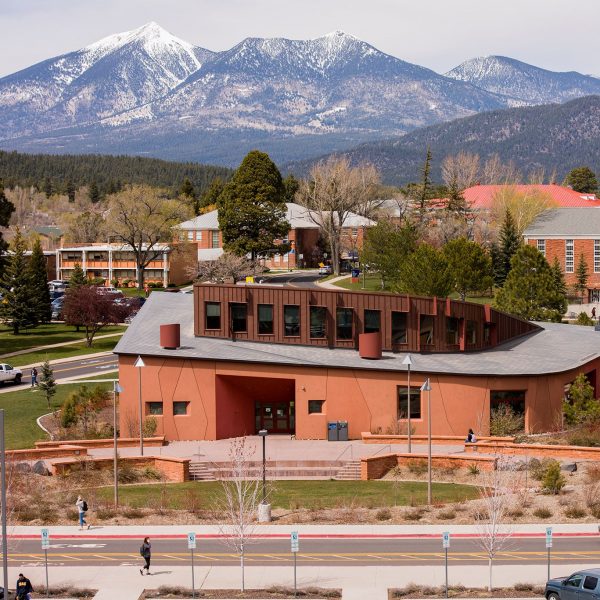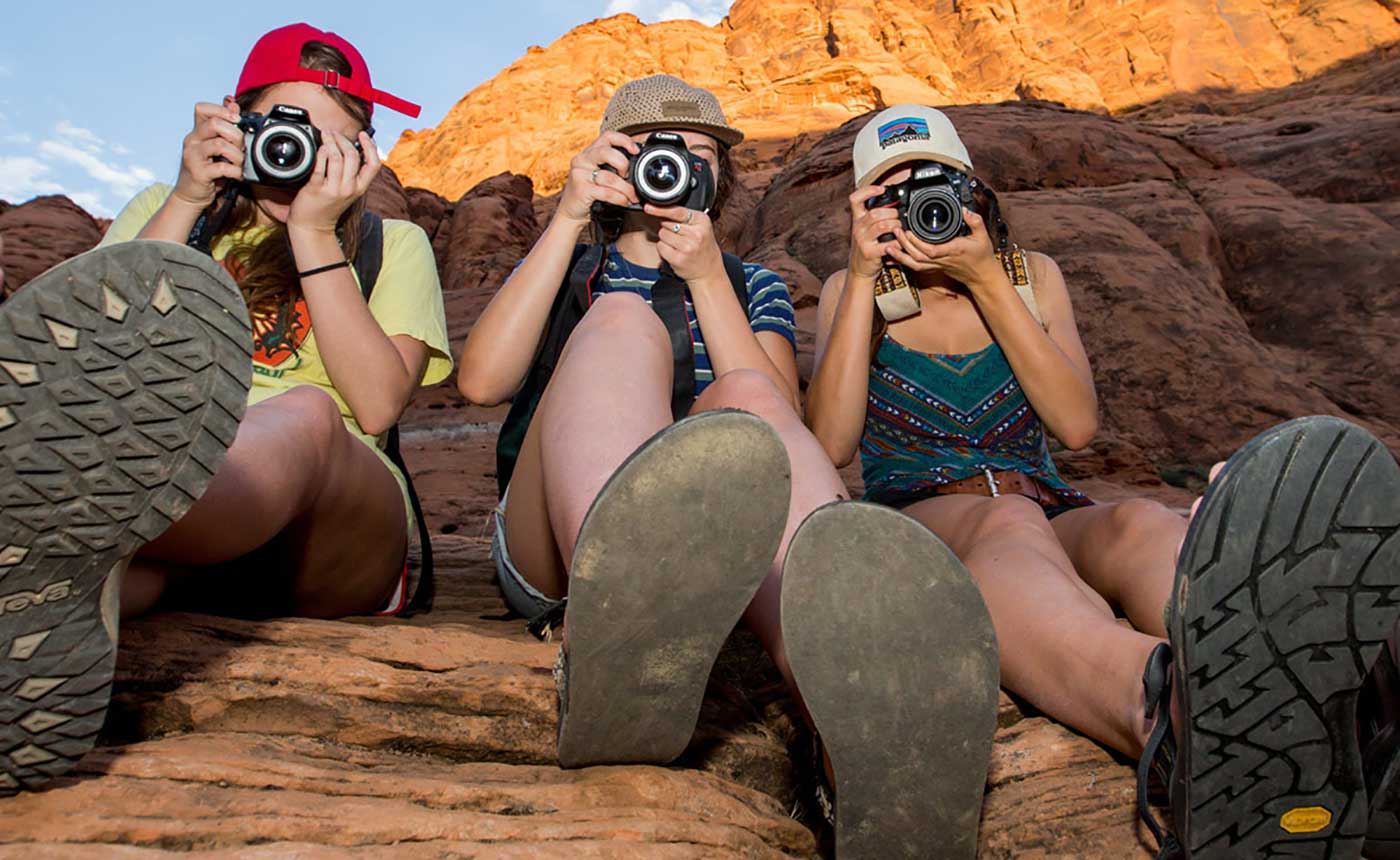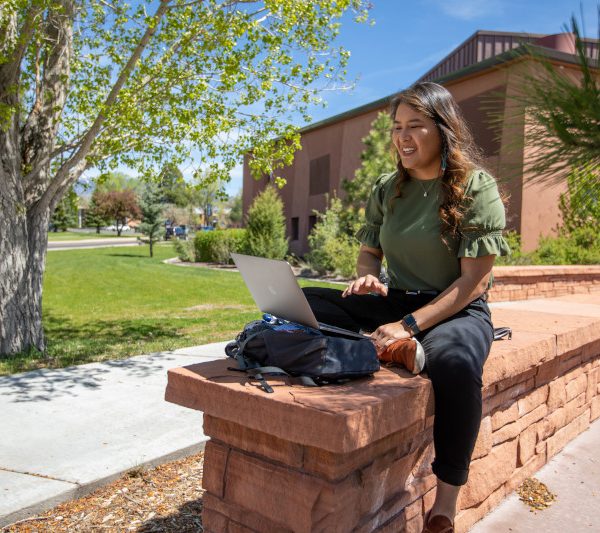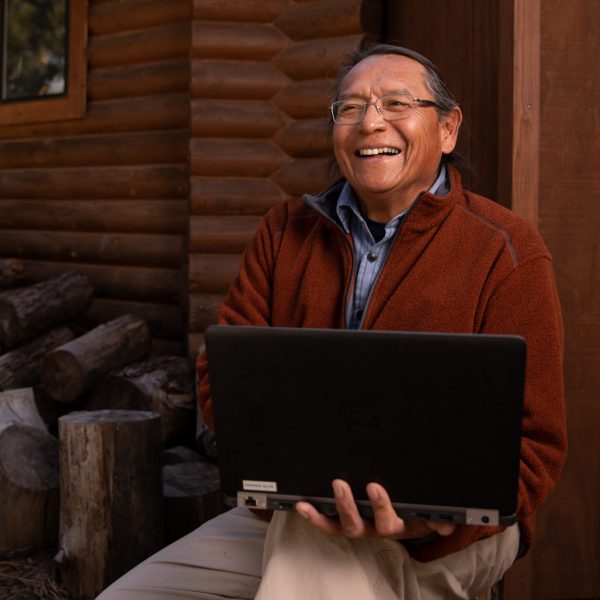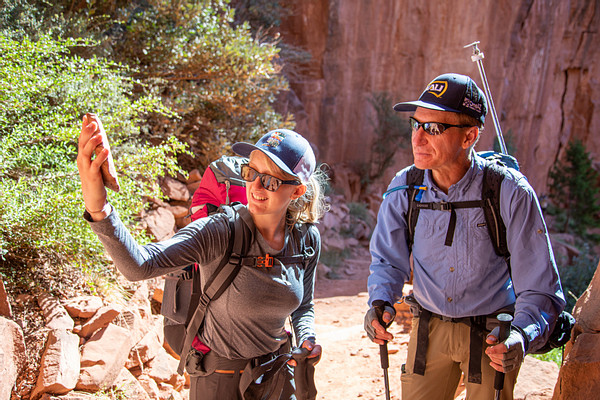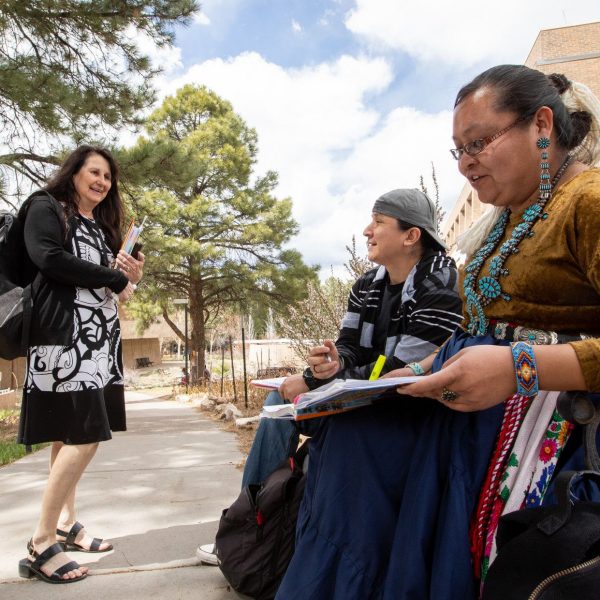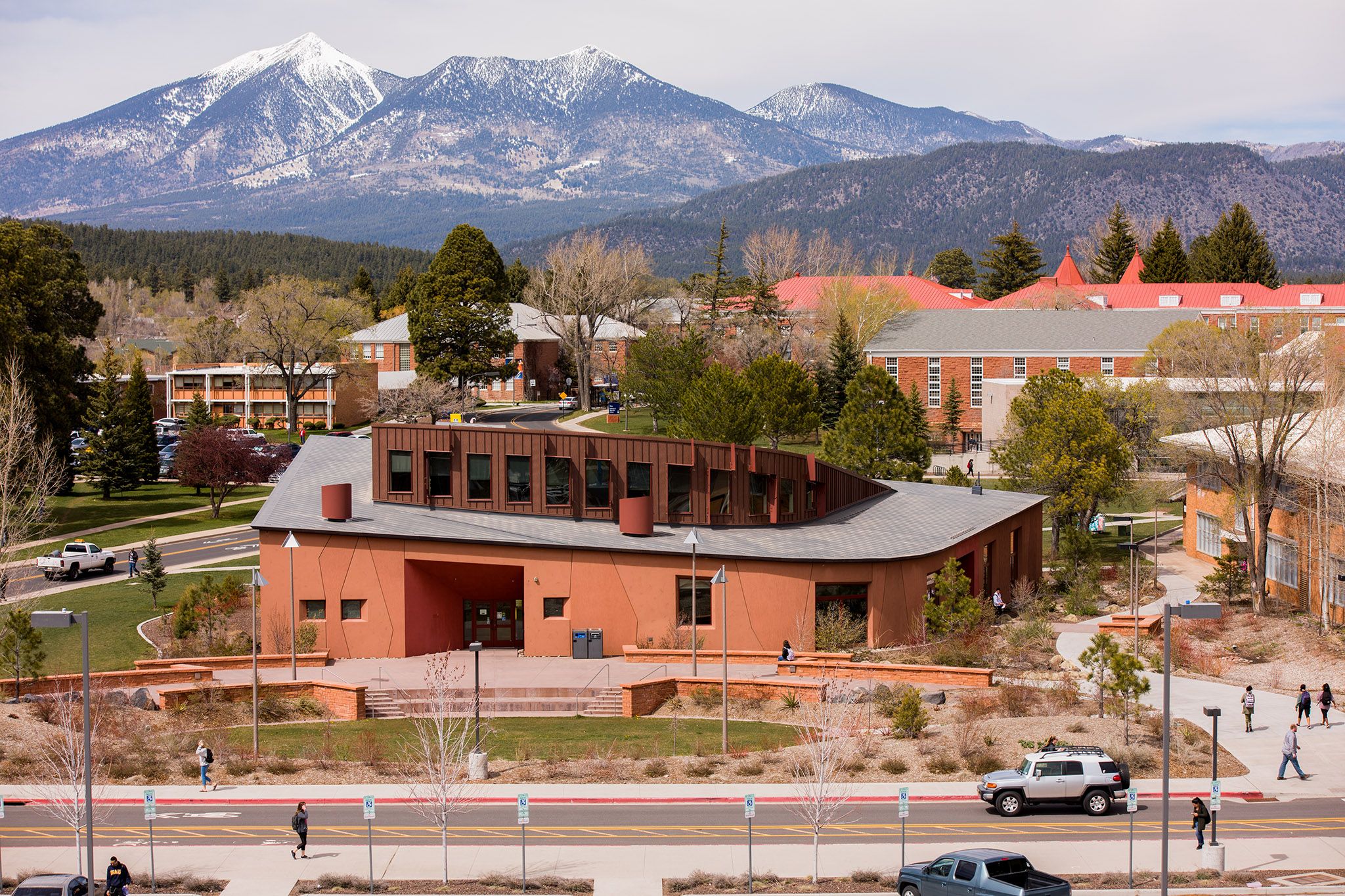
In her own words, Ora Marek-Martinez describes how she and her team brought the warmth of community to the Native American Cultural Center.
As Executive Director of the Native American Cultural Center (NACC), Ora Marek-Martinez has excelled at curating a home away from home that welcomes and supports Indigenous students. But what exactly does that space and support look like? In this candid conversation, Ora shares a bit about protocol and the nuts and bolts of how she turned a building into a home.
Hey Ora. Thanks for taking the time to chat me with me, I really appreciate it. How are you doing today?
You know it’s been a busy day, so it’s good to sort of slow down and talk about something that I really love. If you don’t mind, I just like to begin with my personal introduction. This is sort of the way that we enact protocol.
Of course.
Yá’át’ééh! Shí éí Dr. Ora Marek-Martinez yiníshyé. Dzįł’tlahnii nishlí, dóó Nimiipuu báshíshchiin. Áadóo K’iis aani dashinalí, dóó Bilagáana dasicheii. Akot’eego asdzaní nishlí. Lapwai, Idahodę́ę́ iiyisii náasha, dóó Kinłanídi náashaago.
Basically, I just introduced myself to you in Navajo language. This is something that we’re taught to do when we meet people for the first time when we’re talking about something that is personal and a part of us. This is one of our ways that we establish relationality. In English, it’s like this:
Hello! My name is Dr. Ora Marek-Martinez. I am a citizen of the Navajo Nation, my mother is from the Mountain Cove clan and my father was Nez Perce from Northern Idaho. My maternal grandfather was Hopi from Third Mesa, and my paternal grandfather was Bohemian and Italian. My pronouns are she/her. I am originally from Lapwai, Idaho on the Nez Perce Reservation, but I live in Flagstaff now.
Thanks for a thorough introduction! You used the word ‘protocol.’ Can you elaborate on what that word means to you?
Protocol is all the ways of being and doing that we have as Indigenous people. One of the things that situated me in my life and provided a foundation for my success was learning about my culture and enacting protocols; protocols for how we relate to one another, protocols for having events or for taking care of a space.
Taking care of a space is a big part of your role as Executive Director of the NACC. What was that space like when you first came into it?
It was just that. It was space. It was a building that was available for our students. A very beautiful building that had been upheld and cared for by my predecessor Kathleen Frank, but I noticed there was nobody here. There were few students coming through. It was just an inanimate object.
I was taught that one of your responsibilities is to take care of your home. Your ‘home fires’ is what they call it. So, when I came to the center one of the things that I really wanted was to start this place’s fire.
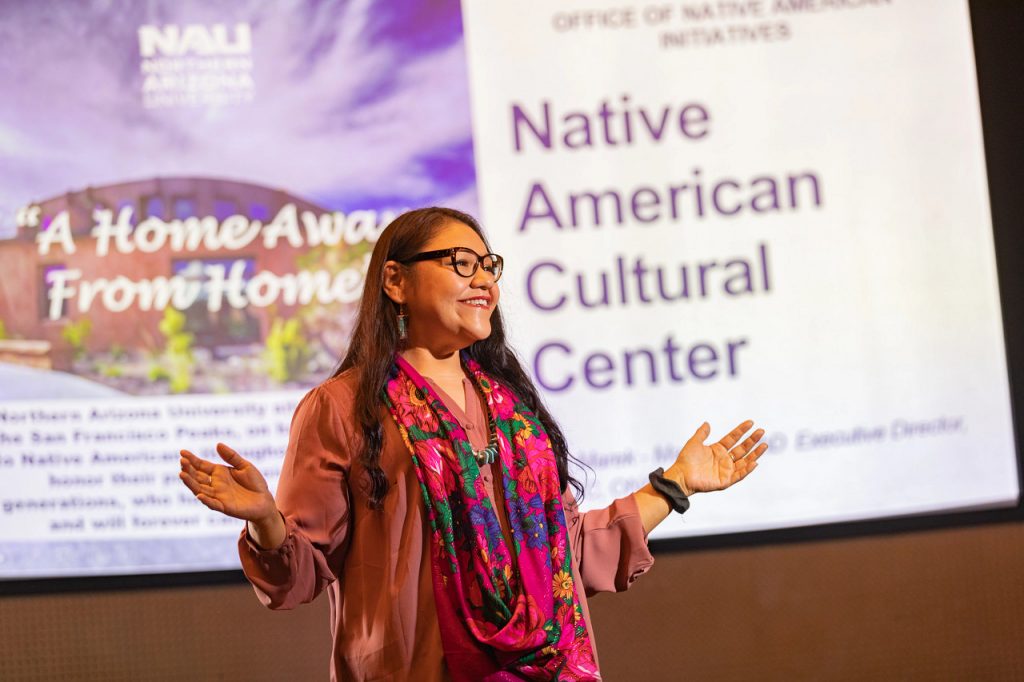
How did you light that fire?
I realized that there wasn’t a presence here. One of the things that I started to do was greet everyone who came in. I chatted with them and introduced myself and let them know that I see them.
How did that work out?
Things started to change. We had a lot of students who would come in and hang out wanting to talk and wanting to just be here.
Then I noticed that we had a kitchen and all of this great space for food. For my community, food brings us together. Everything that we do, we always start with a feast, then we send everybody off with food. So, we added feasting, called Friendship Feast Friday. We invited students to come in and have lunch with us.
We also started a traditional cooking series for students who were far away from home and wanted some of their foods from home. They would cook whatever dish that they wanted, we would purchase all the supplies for it, and they would teach us how to make the dish and speak about the cultural importance behind it. Then we would share it. We had Pueblo pie, blue corn mush, mutton stew. Food was a big way for us to bring ourselves together and hold space for one another.
What other ways have you made the NACC a supportive space?
Part of our role here is making sure that our students maintain their Indigenous identity, so we started to reimagine what our programming would look like. We decided to go with four areas that present a holistic Indigenous experience for our students.
Four areas of programming, got it. What’s the first area?
The first area focuses on the cultural aspect and cultural teachings. We have the cooking series, but we also teach how to make jewelry, how to sew ribbon skirts and ribbon shirts. We’ve had drum practice so they can learn how to sing and drum. We have an elder program where elders are available to our students if they need any kind of grandparent time or support. If they are looking for specific cultural services, then they can also go to an elder.
Grandparent time is a great idea. What’s the second area of programming?
The second area keeps a pulse on surviving in academia. We have workshops on how to take notes, how to fill out scholarship applications, how to write personal funding letters. We’re teaching our students the practical skills that they need to succeed.
We also hosted an Indigenous research methodology series where we taught them about Indigenous research paradigms and gave our students some methodologies they can utilize when working with Indigenous communities. We had to be very intentional, and really made sure to tie this to skills that students were seeking out.
Academic survival and research methodologies make sense for a university setting. How about the third area?
Social outreach. Some of our Indigenous students tend to be very shy.
Why’s that, do you think?
I think because more than half of our students come from their own tribal communities, from their own tribal lands. Within your own community you feel safe. You know everybody. When you come to other communities where you don’t have those connections, I think it’s easier to just sort of clam up and be a wallflower and observe. I know in my community, I was taught that when I’m in somebody else’s community it’s not for me to speak, it’s for me to learn. I never feel comfortable speaking out when I’m in somebody else’s community. I just like to introduce myself and stand back and observe until I get to see the protocol.
When we’re having our events, part of our protocol is ensuring that when students come in, we introduce ourselves to them, we ask them where they are from and try to create a relationship where they feel like they’re welcome. That’s the relationality that I spoke about when I introduced myself in Navajo.
What about the fourth area?
Our final track is Indigenous health and well-being. We took a survey of our Indigenous students in 2017, and we asked a series of questions about what’s important for them in maintaining their health and well-being. The resounding answer was cultural practices. “If we engage in our cultural practices, that’s what makes us feel better. That’s what motivates us.”
So, we came up with a whole series of culturally informed stress busters. We’ve done a couple of Powwow Sweat workouts, which are workouts based on pow-wow dances created by a woman from the Coeur d’Alene Tribe. There are also a ton of Indigenous artists in Northern Arizona, so we’ve brought them in for art therapy. That’s been popular and a lot of fun.
Ora, I have to say, that’s an impressive amount of programming. You’ve put a lot of work into making the center a place to be. Compared to how you found it, how would you describe the center now?
I hear from people constantly that when they come through the center now, it feels warm and welcoming to them. One of my colleagues describes it as “having heart.” Our building has a heart. You can feel it here. For me, when I come into the center I feel, I don’t know how to describe it other than “a presence.” It feels like home. A home away from home.
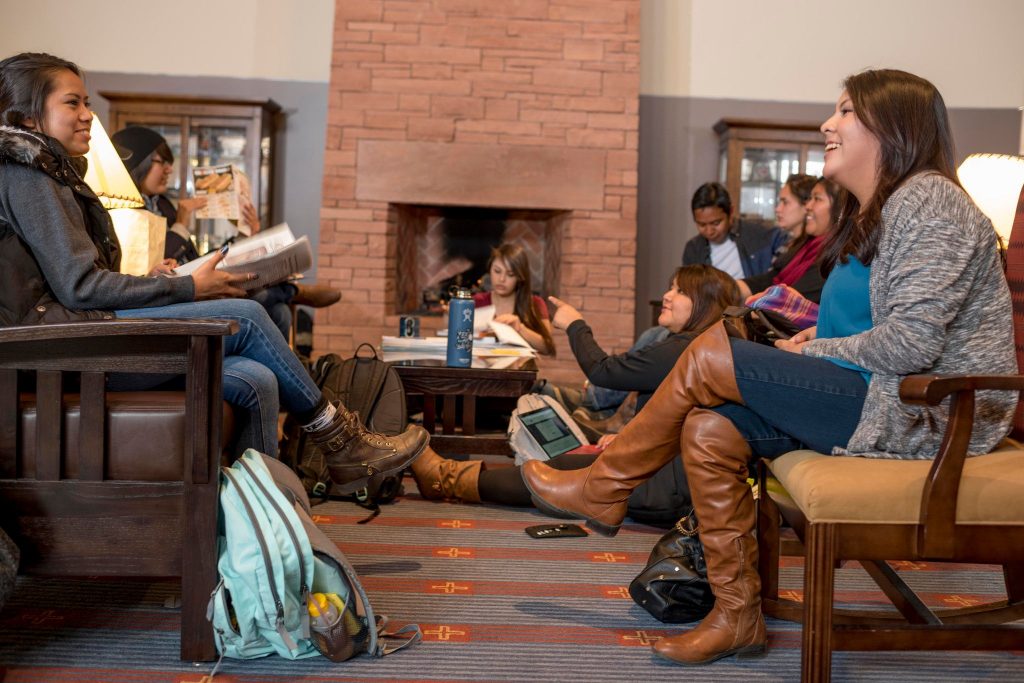
Your work helped take an inanimate object and turn it into a home away from home. How does that make you feel?
One of my favorite things is when everybody’s here and you hear people laughing. That feeling of hearing somebody laugh is a warm fuzzy kind of feeling. It was quite the journey to get to a point where our students felt safe and protected here. We got there by upholding respect for one another, maintaining and honoring the space that we have together, and in recognizing that our ancestors are with us and we’re creating this space for future generations.
I think about my kids coming through here, and their kids. Two of my sisters graduated from NAU. My dad graduated from NAU. My mom came through and then my younger brother came through. NAU was a family affair for us. It created a legacy for us to feel welcomed and realize that NAU was supportive of our aspirations. At one point I had nothing in my life. To come from the situation that I did, to come to a place and to feel welcome, and then to succeed is just…it’s a miracle.
Even before Ora arrived at the NACC, she was creating indigenous futures in academia. Read her story to learn about what drives her in the fight for decolonization.

